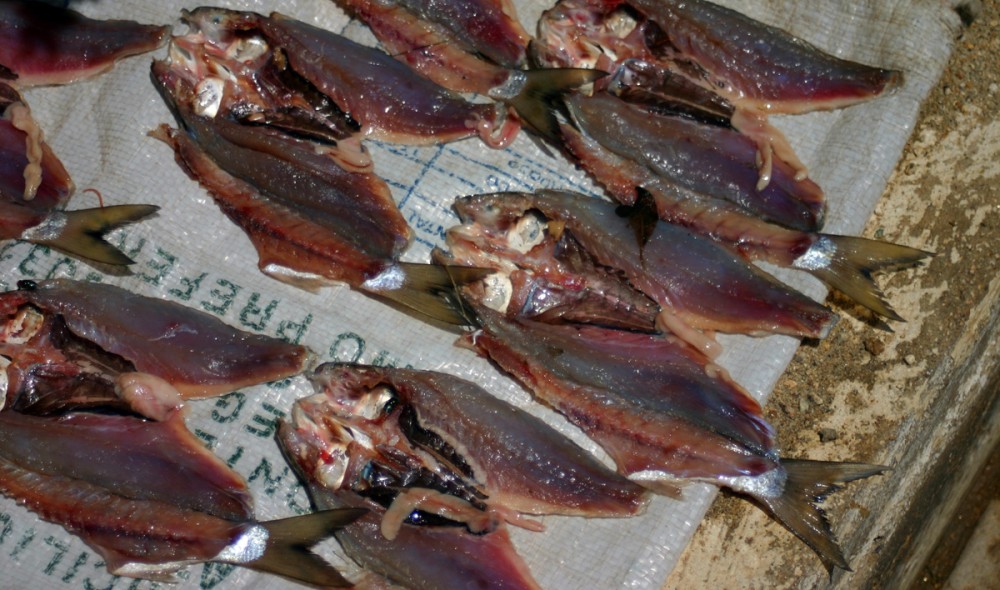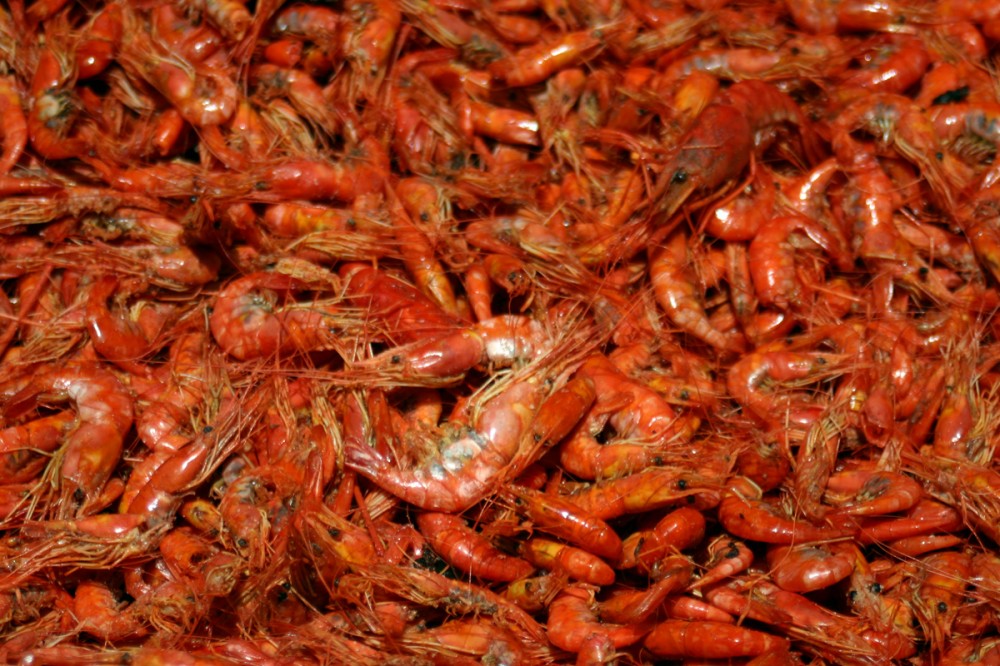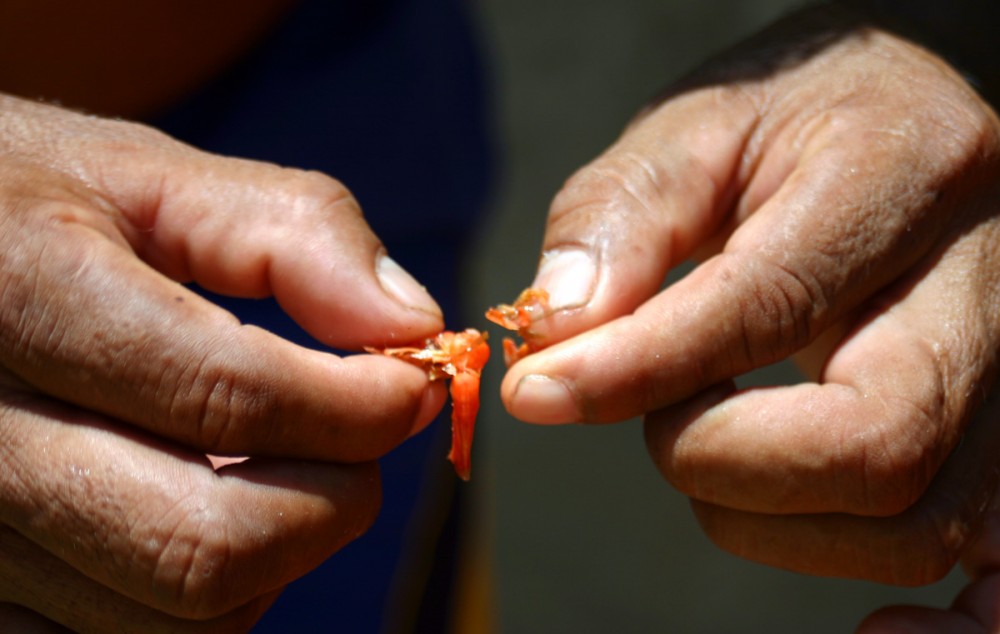How to Eat Sun-Dried Shrimp
We were walking down a tiny residential street in Playa Mazunte, parallel to the ocean, dotted with tiny cottages where the local people reside in a version of paradise. Our momentary interest was taking photos of scenes from everyday life. Thatched roofs, colorful flowers, and bright-faced children filled the frames of our cameras. It was an easy way to pass the time.
Many of the little houses had tarps or bags stretched out in the yards, where fishermen dried the morning catch in the afternoon sun. Bright crimson shrimps were heaped in piles alongside carefully filleted fish. The bounty of freshly-caught creatures was easily visible from the road, so we stopped to take a few pictures.


After snapping a few shots, i looked up to notice a man had stepped outside of the house and was watching us from the doorway.
“Holá!” he called to us. “Hablán Español?”
“Sí!” i replied. I do speak Spanish, more or less. I was eager to converse.
He asked us what we were doing, and i told him we were taking pictures of things we saw around town. No, not for a magazine, just for fun. Yes, we were taking pictures of the array of shrimp and fish he had arranged to dry in his front yard. Did we want to try them? You mean, to eat? Now? Just as they are?
This was a prospect we had not considered. Apparently, sun-dried shrimp are commonly eaten here by the local people, and he was offering some to us.
As a practicing vegetarian, i hesitated. I knew my friend, raised as a vegetarian since birth, had never intentionally eaten meat (of any kind), and wasn’t likely to start today. I, on the other hand, waffled between vegetarian and pesca-tarian, although i had not consumed any fish in quite a while. My family had always taught me, however, never to refuse food someone offers you in their home — and since we had literally been taking pictures of this guy’s front yard, i figured it counted.
I would try the shrimp.
My friend didn’t speak Spanish, so i explained as delicately as i could that she was a vegetarian — in other words, she didn’t eat anything with a face, or a mother. This is how we’d learned to explain vegetarianism in a culture of carnivores. He gave her a quizzical look, cocking his head to the side, and then half-smiled. I think he just figured she would be missing out.
As for me, i indicated i would try the shrimp, so he reached into the heaping pile and pulled out a particularly thick and juicy one — which was still probably less than 2 cm long. He cracked the shell with his weathered but delicate hands and broke off the tail and legs, offering me the meat.

“Uau, delicioso!”
It really was delicious — salty, and slightly crunchy from the remaining bits of shell. He looked to see if i was really enjoying it, peering at me with a crooked smile. After i had chewed enough to satisfy his curiosity, he popped a whole shrimp into his mouth — legs, tail and all — and chewed in unison with me.
We both grinned as i realized he had prepared my shrimp specially to exclude those particular bits, knowing that Americans (or tourists, extranjeros, whatever) didn’t usually eat them. His cultural savvy and diplomacy was quite charming.
In the meantime, my friend stood rather numbly beside us, somewhat indifferent to the subtleties of the exchange and unable to penetrate the language barrier. At that moment, i was exceptionally grateful for my ability to communicate with this fisherman, both verbally and otherwise. I was also quite glad i had decided to eat the shrimp — not only to be polite, but also because it was actually really tasty.
